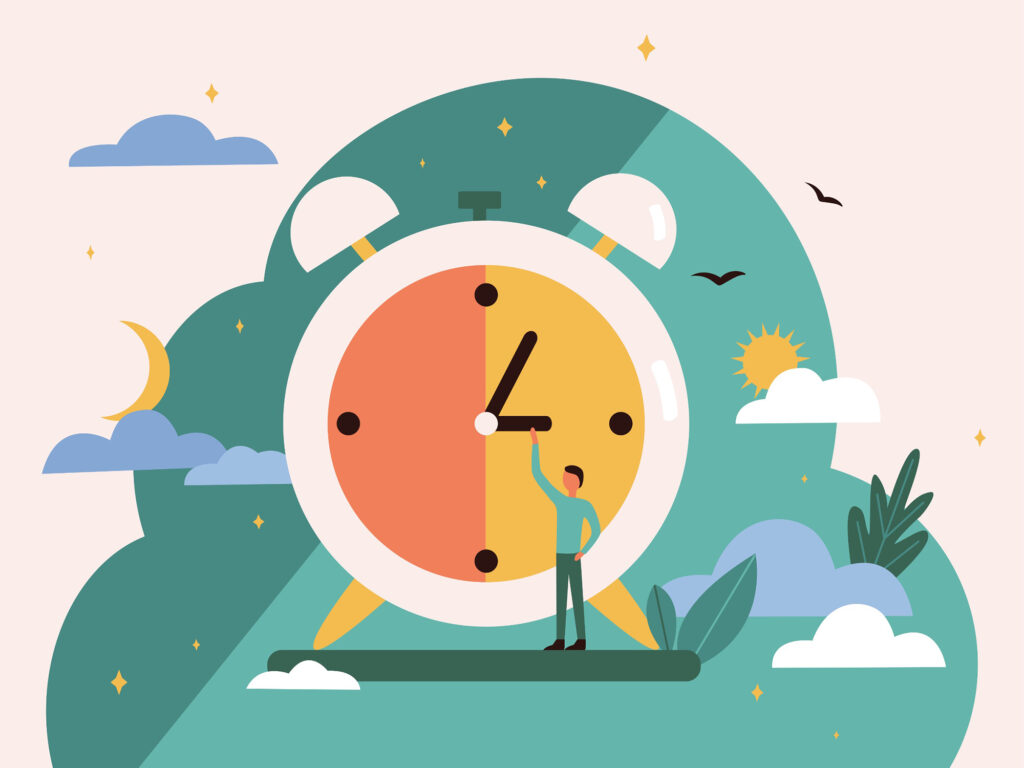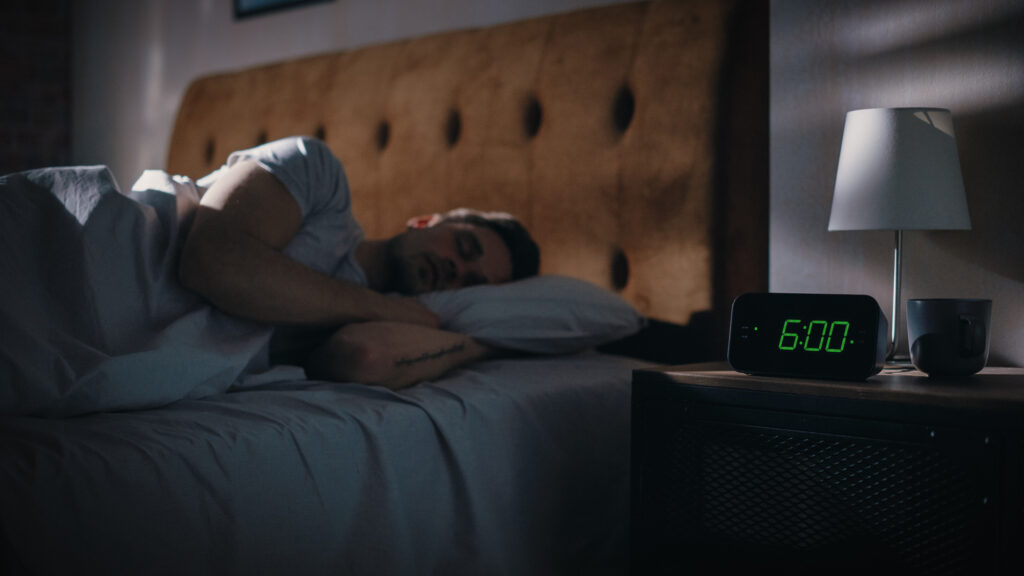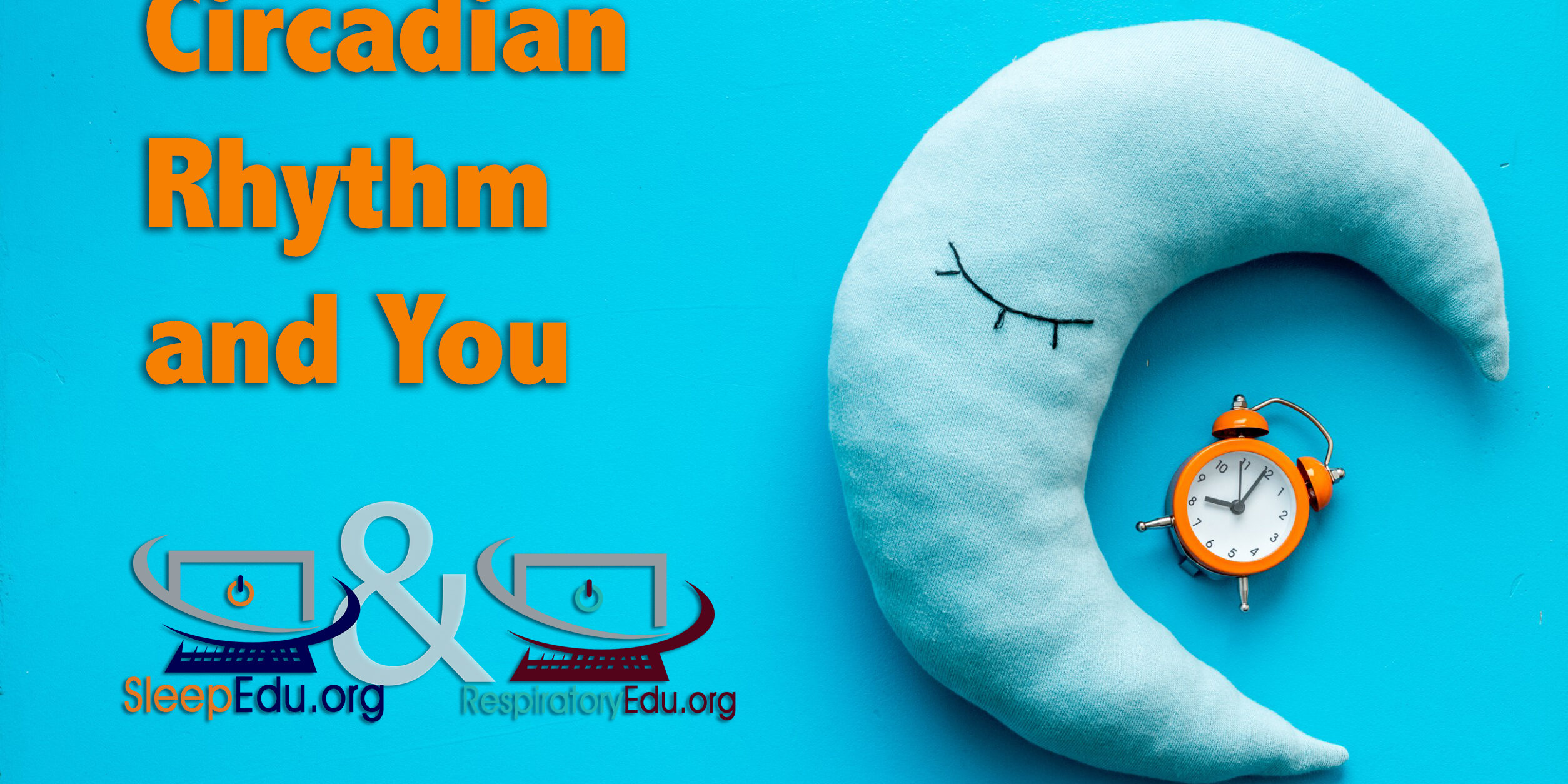Circadian rhythm is the biological clock that regulates the body’s sleep-wake cycle over a 24-hour time period. The part of the brain that responds to light and natural light exposure is also responsible for regulating circadian rhythm. Thus, the reason why we are more alert during the day with a gradual decline as the night approaches.
The Mechanism
In general, two main processes control circadian rhythm:
- the internal biological clock system.
- external surroundings, such as natural light exposure.

This internal biological master clock is located in the hypothalamus, is composed of over 20,000 neurons, and is called the suprachiasmatic nucleus, or SCN. This is a bilateral structure located in the anterior part of the hypothalamus. It is the central pacemaker of the circadian timing system and regulates most circadian rhythms in the body[i]. Multiple afferent neuronal tracts project to the SCN. Its major tract is the retinohypothalamic tract originating from photosensitive ganglion cells of the retina – obvious for the detection of light. Additionally, efferent projections from the suprachiasmatic nucleus innervate structures such as the pineal gland, producing melatonin during the night for induction of sleep. Disruptions in the SCN circadian system have been found to correlate with various mood and sleep disorders.
In addition to controlling sleep, the SCN also plays a huge role in metabolism and hormone production. It synchronizes local clocks, found in the liver, lungs, muscles, and connective tissues, with the master clock through a complex process of alterations in body temperature and hormone secretion.
When the SCN master clock sends signals to trigger specific body functions, this activates the circadian rhythm or biological clock. This biological clock produces daily circadian rhythms, tracks their timing, and manages other seasonal and yearly cycles.
The biological clock coordinates with the master clock to keep the circadian rhythm in sync with the surrounding environment, including:
- Daily changes in light
- Humidity
- Temperature
- Activity levels
- Meal times
Circadian Rhythm and Sleep
Obviously, the circadian rhythm determines sleep and wake times by detecting light signals. During natural light exposure at daytime, light enters the eye and travels to the SCN which triggers alertness and wakefulness. But, when the sun sets, the master clock triggers melatonin production by the pineal gland which promotes drowsiness and sleepiness.
Other factors that contribute to the sleep-wake cycle include:
- Seasons
- Daylight saving time
- Sleep deprivation
- The length of time of being awake
- Work Schedules
Circadian Rhythm and Health
The importance of circadian rhythm doesn’t end with sleep. It is crucial for the proper function of key bodily processes and affects energy and fitness levels. A healthy circadian rhythm is associated with a strong metabolism, reduced stress levels, as well as longevity.
On the other hand, irregular circadian rhythms have been connected to chronic health issues such as depression, obesity, and sleep disorders. Namely, the body’s internal clock can affect over thirty medical conditions, including the following:
- Heart disease
- High blood pressure
- Diabetes
- High glucose levels
- Cognitive decline
- Bipolar disorder
Circadian Rhythm Disorders

Delayed Sleep Phase Syndrome (DSPS) – This circadian rhythm disorder is characterized by a feeling of tiredness later in the night meaning that the person goes to sleep at least two hours past a reasonable bedtime and also wakes later than social norms.
Advanced Sleep Phase Syndrome (ASPS) – As opposed to DSPS, this disorder makes people feel tired earlier at night meaning that the person with ASPS goes to bed at least two hours before a reasonable bedtime and tends to wake earlier than social norms.
Non-24-Hour Sleep-Wake Syndrome – People with this disorder have a circadian rhythm that’s out of sync resulting in sleep cycles slightly longer than 24 hours, leading to later daily sleep and wake times which tends to work itself around the clock. This disorder is typically associated in individuals who are blind and do not have the typical light cues.
Shift-Work Sleep Disorder (SWSD) – This disorder is a result of a conflict between the circadian rhythm and the work schedule which runs counter to the internal body clock, resulting in insomnia, excessive daytime sleepiness, and other health issues.
Conclusion
In conclusion, circadian rhythm is strongly tied to the body’s internal clocks, governed by the master clock in the SCN. This complex system not only regulates the sleep-wake cycle but also plays a vital role in metabolism, hormone production, and overall health. The synchronization of circadian rhythms with environmental factors such as light, temperature, and activity levels is crucial for optimal functioning.
The profound impact of circadian rhythm on health is evident, with a well-maintained rhythm associated with enhanced metabolism, reduced stress, and longevity. Conversely, irregular circadian rhythms have been linked to various chronic health issues, including depression, obesity, and sleep disorders, affecting over thirty medical conditions such as heart disease, diabetes, and cognitive decline.
Additionally, circadian rhythm disorders, such as DSPS, ASPS, Non-24-Hour Sleep-Wake Syndrome, and SWSD highlight the vulnerability of this system to disruptions. Understanding and maintaining a healthy circadian rhythm is essential not only for a good night’s sleep but also for overall well-being and the prevention of potential health complications.
References








